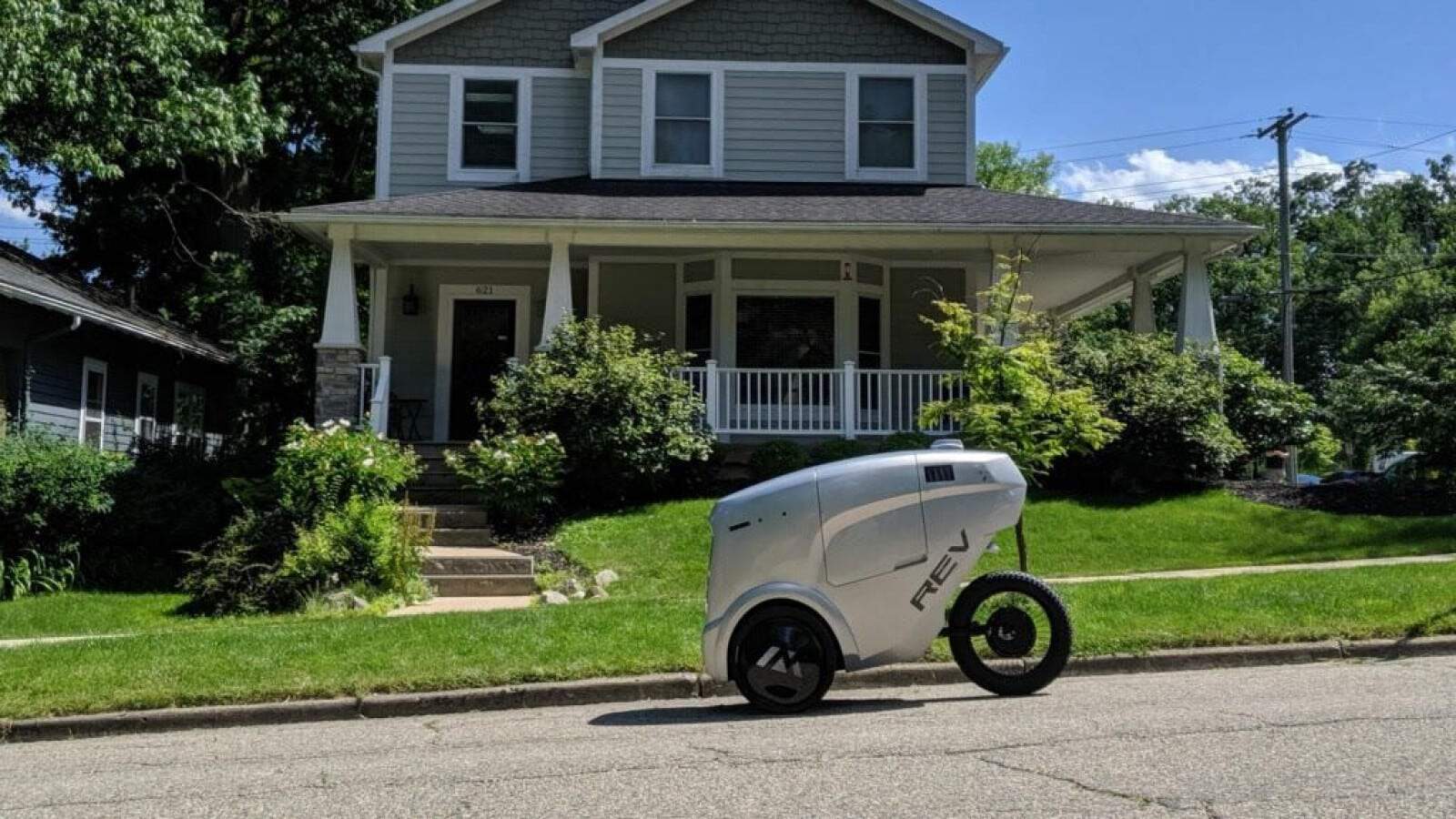Business
AI applications in retail in 2020 – AI & ML will continue to evolve
AI is going to transform and revolutionize retailers. Find out what science fiction assumptions will become a reality of this industry as early as 2020.

Just a heads up, if you buy something through our links, we may get a small share of the sale. It’s one of the ways we keep the lights on here. Click here for more.
Retail is one of the largest industries in the world so it is not surprising that it is also one of the first industries that allowed AI to change and transform itself. Some of the applications of AI in retail have already become habitual to us but this innovation is going to change the industry in such a way that it will never be the same anymore.
In this article, we have collected the most promising ways of AI application in retail for 2020, as well as highlighted the real benefits from AI-integration.
AI-Based Visual Search Is Going to Skyrocket
Visual search is the trend of the last year. And modern AI systems began to make fewer and fewer errors in recognition. For retail, this means that every customer will be able to get what he wants, even if he does not know where to buy it.
For example, the user saw a beautiful bag in the celebrity’s profile on Instagram, and a visual search will help to find this model without even knowing the brand name. Also, smart systems will tell you where this model is available, show the best price and find the nearest physical point of sale.
Facial Recognition to Obtain More Customers’ Data

AI cannot live and work without data. And in this context, retailers will go even further in 2020. It is predicted that retailers will use smart cameras at their physical points of sale, which will read the maximum information about customers. These cameras will recognize faces, immediately determine the identity of the customer, for example, relying on photos from social networks, correlate these data with the information that is already stored in the retailer’s database, pull up data on the purchase history based on the loyalty card, and this is far from all possibilities.
But the most important innovation that will become a reality already in 2020 is that in addition to recognizing the face itself, the sensors will recognize facial expressions and make assumptions about the mood of the buyer. On this basis, AI will generate data on the thoughts and intentions of the client at a given time.
In part, this sounds like an attempt to invade personal space, but let’s not forget that while AI can not read thoughts. All the data that the system will generate by reading it from the buyer’s face, so far remain only assumptions, although, with a high degree of probability, they will be correct.
This will give retailers an instant opportunity to respond and create a personal strategy about how best to interact with a particular customer right now, and what to offer him to fit his current needs as accurately as possible.
More Accurate Predictions for Retailers

Predictive analytics is one of AI’s greatest strengths, and it works perfectly for retail. Already, many companies use this opportunity to predict trends, increase or decrease demand for a particular product, as well as build predictive models of consumer behavior.
There is a real reason to believe that the prediction skill will only develop. Systems will take into account an increasing amount of data, they will more intelligently correlate new data with existing information and will make the most realistic forecasts. This is because the development of technology of artificial intelligence is inexorably approaching its goal – to make the system think like a human while analyzing an unimaginable amount of data.
More Personalized Content

There is also every reason to believe that chatbots will become more and more intelligent. Dialogues between the buyer and the chatbot will be more meaningful, and the responses of the system more balanced and thought out.
For example, H&M has already begun implementing this approach. Customers of this brand can ask the chatbot to pick up a particular unit of clothing for them, indicating only basic parameters, for example, a women’s jacket. At the same time, the chatbot asks suggestive questions to narrow down the search criteria, then offers some of the most suitable options, first analyzing the presence of each item of clothing in the location closest to the buyer, and then proposes to vote for the most liked option.
So the retailer gets even more information about the needs of the client at the moment and his real preferences for color, shape, and style.
Virtual Try-on Room
In 2020, virtual reality will be inseparable from artificial intelligence, and retailers will take advantage of this. The next step towards achieving the perfect user experience is virtual fitting rooms, which will allow customers to try on all their favorite models without leaving home. Artificial intellect will play the role of assistant picking up and offering supposedly suitable models. The main advantage of this approach is saving the buyer’s time, as well as the possibility of the most targeted trip to a real store.
Robot Assistance in Retail Stores

Already in 2020, the first attempts to introduce robotic systems and touch panels in real stores will be made. And it’s very possible that at the entrance to the store, not a friendly girl in a brand form, but a real robot will welcome us. It is believed that interaction with the robot will be easier and more effective for those who are embarrassed to ask questions to human consultants in stores.
Also, the touch panels installed in the fitting rooms will help to clarify whether for example there is a different size of the thing that the customer is trying on and if the size is available, it will be possible to give the robot a signal to bring it, or pre-order it.
Improve Product Layout
Here is another interesting application of AI in retail that will become a reality in 2020. Smart systems will be able to generate arrays of data on user behavior in the store, and based on them, offer strategies for the location of goods in the retail space. In theory, this is also about predictive analytics, but in practice, it is about improving customer experience, a higher level of sales (buyers will find what they need) and saving time.
So, How Does AI Help Retail Business?
All that we described above sounds like an excerpt from a science fiction book. However, no, it will all become reality very soon and we will see it with our own eyes. Now let’s look at the capabilities of AI, not for the buyer, but the owners of the retail business. How can innovation help boost it even more?
- Get Rid of Routine Tasks
Robots that will replace human consultants will help get rid of routine tasks, but at the same time, customer service will reach a new level.
- Smart Work of Employees
In continuation of the previous statement, employees of retail companies get the opportunity to engage in those tasks that require direct human participation, creativity, and innovative approaches.
Besides, it is believed that a professionally developed AI system, for example, with the help of SPD Group, will help create more flexible schedules, improve the opportunities for remote interaction of employees, make them happier, and therefore more efficient and loyal to the retail company in which they work.
- Save More, Spend Less
The above opportunities will lead to the fact that retail will be able to receive more and spend less due to the rational management of business and sales processes. Also, AI systems allow retail brands to track whether resellers are breaking Minimum Advertised Price. For a brand, this means not allowing even the smallest opportunity to lose their share of the profits.
- Credit Card Fraud Detection
AI is already successfully working with the task of credit card fraud detection in the financial sector, but it is also applicable to retail. Here, as always, everything is based on data, plus an analysis of customer behavior.
Smart systems collect data about what purchases were made with a credit card, in which stores and locations they were made, compares with their knowledge about suspicious and potentially fraudulent behavior, for example, incorrectly entering a card’s PIN code several times in a row, and makes a final verdict. True, at the moment, the false-positive result is also possible.
Conclusion
As you can see, retailers use the most innovative technological capabilities ̶t̶o̶ ̶m̶a̶k̶e̶ ̶u̶s̶ ̶b̶u̶y̶ ̶m̶o̶r̶e̶ to hit the target accurately and make the purchase process as easy and efficient as possible. It remains only to hope that the sociological and environmental missions of companies that produce and sell more using AI will also remain at a high level.
Have any thoughts on this? Let us know down below in the comments or carry the discussion over to our Twitter or Facebook.
Editors’ Recommendations:
- 5 artificial intelligence apps for your smartphone
- Artificial intelligence in the healthcare industry: How AI is shaping the future
- Artificial intelligence can immediately boost your business
- Artificial intelligence in healthcare: Is it ready for deployment?
Editor’s Note: Helen Kovalenko is IT Project Manager at SPD Group. She is working in a Data Science Team over the NLP, Computer Vision, and Fraud Detection solutions, and gladly shares her researches and developments in her blog posts.




























